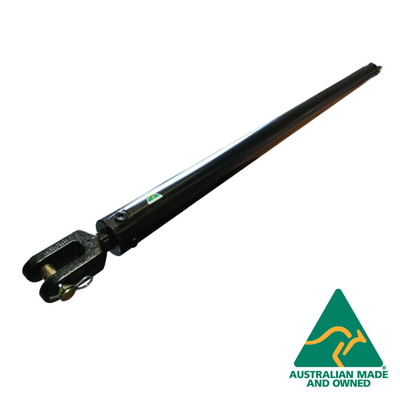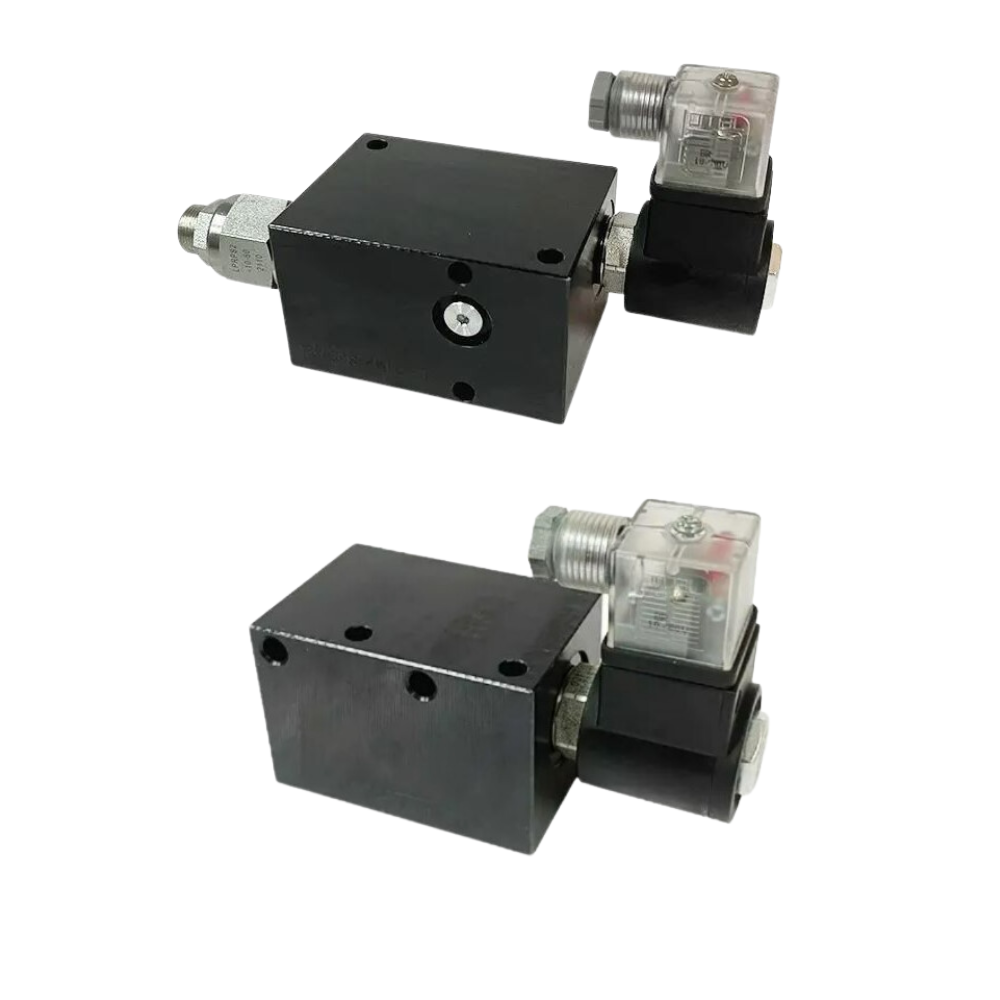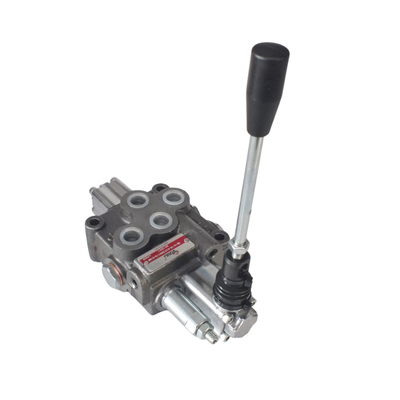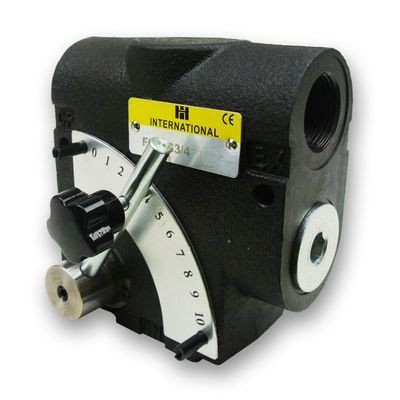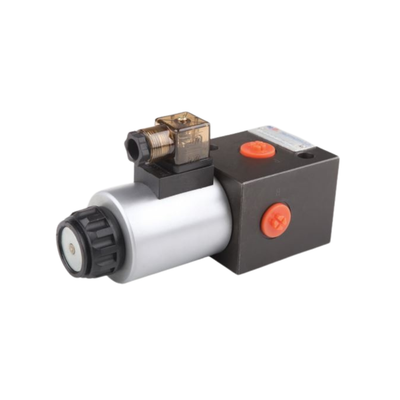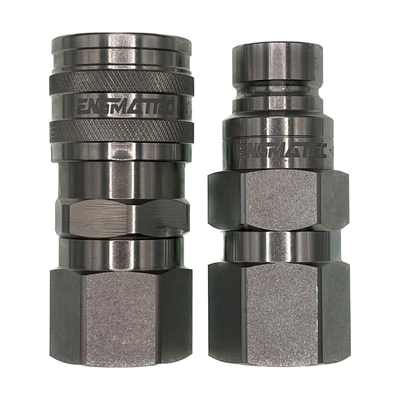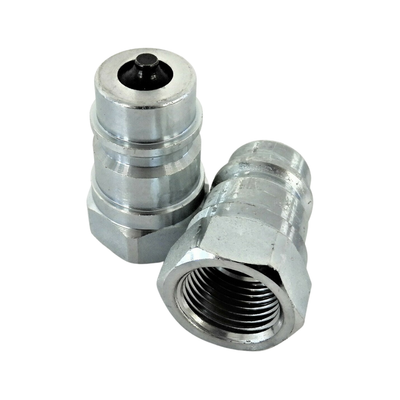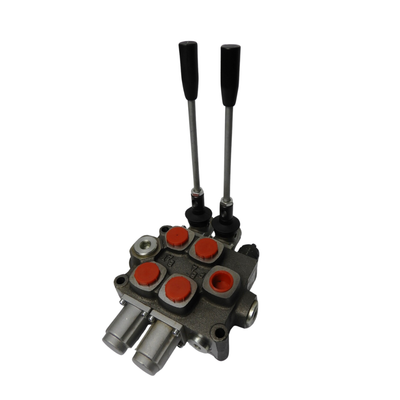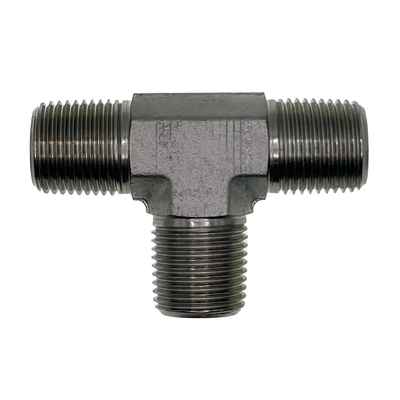
Hydraulic Quick Hitch Valve With - W-Out Pressure Reducing on Close
Quick Hitch Valve With or without Pressure Reducing on Close, flows up to 20 Lt/min pressures to 350 bar (5,100 psi)
Quality Quick hitch valves made in Italy are designed for actuating of Excavator's or Loader's quick hitch cylinders.
Quick hitches are used to allow the machine operator to quickly disconnect and re-attach various different attachments or implements.
Clamp force is at a reduced pressure, whilst unclamp is at full system pressure.
- Construction Steel Body with 1/4" BSPP Ports.
- Flow 20 Lt/min at 350 bar (5,100 psi) Maximum pressure
- Regulated Pressure 50-160 bar (735 to 2,350 psi)
- Voltage available in 12 or 24 Volt DC. Includes LED Din Plug
- All four Ports are 1/4" BSPP
- Includes 12 or 24 volt DC Solenoid coil with Din plug 12 / 24 VOLT = 1.6 AMPS
The best place to tee off a pressure feed line for a quick hitch valve on most small medium and larger excavators or loaders is generally at a main pump test port.
Why a Pump Test Port?
Direct Access to System Pressure: Test ports are specifically designed to provide easy access to the main hydraulic system pressure.
This ensures you're getting a consistent and reliable pressure source for your quick hitch.
Designed for Pressure Measurement: These ports are built to withstand the high pressures of the hydraulic system, making them a safe and reliable connection point.
Important Considerations:
Identify the Correct Test Port: Consult your excavator's service manual or hydraulic schematic to identify the correct test port. There might be multiple test ports for different parts of the system, so it's crucial to choose the one that provides main system pressure.
A quick hitch valve with a built in pressure reducer, is essential as Quick hitches typically operate at a lower pressure than the main hydraulic system.
The pressure reducer will ensure the quick hitch receives the correct pressure, preventing damage to the valve, seals and quick hitch cylinder.
Flow Rate: Ensure the tee and any additional lines you install have a sufficient flow rate to supply the quick hitch valve without affecting other hydraulic functions.
Proper Fittings and Hoses:
Use high-quality hydraulic fittings and hoses rated for the excavator's operating pressure. This will prevent leaks and ensure safe operation.
Professional Installation: If you're not experienced with hydraulic systems, it's highly recommended to have a qualified technician install the tee and quick hitch valve. This will ensure proper installation and prevent potential damage or safety hazards.
Alternative Options (Less Ideal):
Teeing off an existing hydraulic line: While possible, this is generally less ideal than using a test port.
It can disrupt the flow to the original function and may require more extensive modifications. If you must tee off an existing line, choose one that is not critical for safety or primary machine operation.
Dedicated Auxiliary Hydraulics: Some excavators might have dedicated auxiliary hydraulic circuits. If your machine has this option, it would be the preferred method, as it's designed for adding attachments.
- Relieve Hydraulic Pressure: Before working on any hydraulic lines, always relieve the system pressure according to the manufacturer's instructions.
- Cleanliness: Maintain cleanliness when working with hydraulic components to prevent contamination of the system.
Need More information
call us on 07 5563 1982 or on 1300 1 HOSES
or email us at sales@mhfgc.com.au
Hydraulic.Online
IMPROPER SELECTION, INSTALLATION, IMPLEMENTATION AND/OR OPERATION BY ANYONE OTHER THAN PERSONS WITH APPROPRIATE TECHNICAL AND MECHANICAL TRAINING CAN RESULT IN DAMAGE TO EQUIPMENT OR PROPERTY, SERIOUS PERSONAL INJURY OR DEATH. PROPER PRECAUTIONS AND SAFETY PROCEDURES SHOULD BE IMPLEMENTED PRIOR TO INSTALLATION AND OPERATION OF EQUIPMENT.
MM 23/01/2025 abc pic seo
